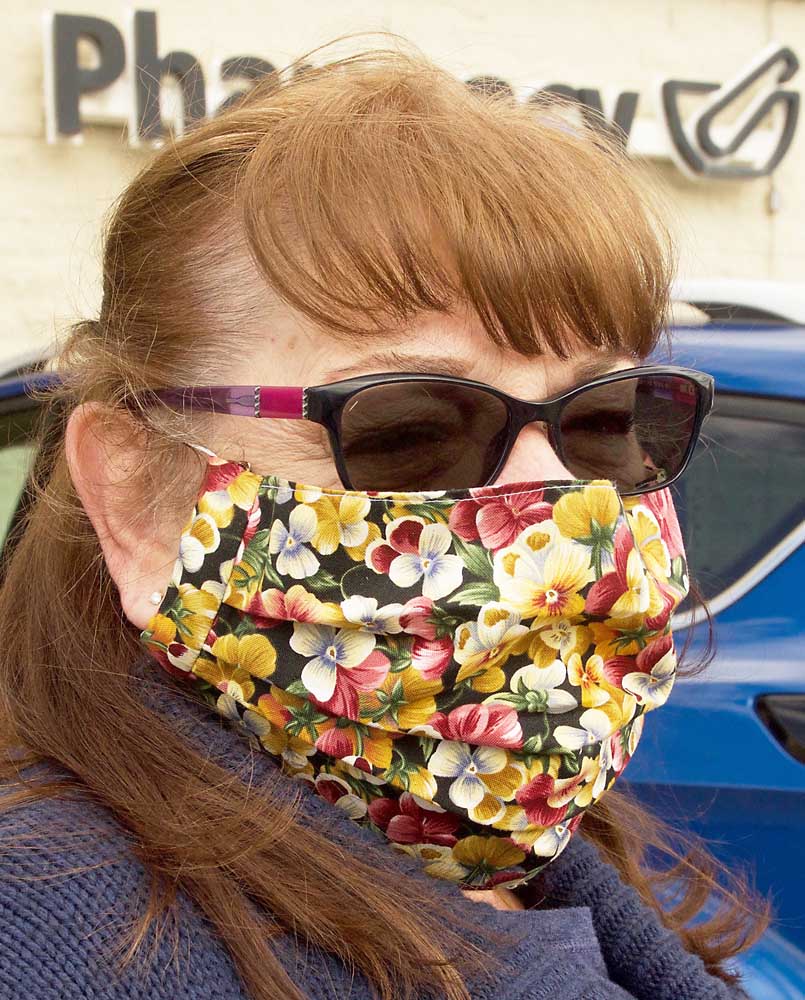It’s going to be a long haul, part 2
Published 11:38 pm Tuesday, April 14, 2020

- Kathy Wolfe of Enterprise wears a mask while shopping. This locally made mask significantly decreases chances of the wearer transmitting the disease to others.
Following up on last week’s piece, the aim of this final piece is to put COVID-19 into historical context, describe what lies ahead, and comment on readiness.
Epidemics are a fact of nature. Before industrially manufactured vaccines, epidemics ended by some combination of avoidance behaviors, development of herd immunity from contracting the disease and recovering, mass fatalities making it difficult for the virus to find new hosts, and occasionally use of natural vaccine material. In rare instances, a single epidemic/pandemic killed tens of millions of people and an estimated 50% of a region’s population.
Trending
Epidemiological models forecasted two million U.S. deaths from COVID-19 in the absence of strong control measures. To prevent that outcome strong control measures were put in place. So what’s next? The following phases describe in a general way what experts believe is the best way to navigate the long road ahead
Phase 1 – Slow the spread. The goal is to make it much harder for the virus to find new hosts. In order to identify the best policies for phase 2, a critical part of phase 1 is scaling up testing and data analysis infrastructures.
Each state needs to build a robust state-wide disease surveillance system. Three types of testing are necessary: point-of-care testing, a sentinel program to detect outbreaks earlier than point of care testing, and a blood test for COVID-19 antibodies. The latter test is the best for identifying how widespread the virus has been, and who may have immunity and be able to safely work in highly social or high risk settings.
For a state or portion of a state to advance to phase 2, flattening the curve must be followed with a minimum two-week sustained downward track in the curve. In locations with a very small population a frequency metric might be more appropriate: for example, new cases below 1.0/week/10,000 people for two consecutive weeks.
Phase 2 – Re-open and monitor. The goal is to cautiously relax control measures in several steps over time. Different states – perhaps even different portions of a state – should reopen at different times.
Policy decisions should be driven by surveillance system data and finding a balance between infection control and economic concerns. Each state should analyze its historical trends and new testing data on a weekly basis, and rate each portion of the state as: Go to next step of relaxing measures, Don’t relax measures at this time, or Increase measures.
Trending
With new cases at a more manageable level after phase 1, a renewed focus on contact tracing and quarantine control measures is paramount. Workplaces and schools must adapt their operations to reduce potential for transmission. With less strict control measures in place, people must guard against an erosion of vigilance.
Resurgence of the virus will occur in places due to control measures being relaxed too quickly, reintroduction of the virus, or poor compliance. Resurgence will require a return to stricter control measures in the affected area.
Drugs for treating COVID-19 may be approved during this phase. However, phase 2 will continue until (a) a medicinal product is widely available to prevent (versus treat) COVID-19, (b) the disease is no longer a threat due to successful long-term (non-pharmaceutical) control measures, or (c) if a product and long-term control are both unsuccessful, persistent transmission could lead to the development of herd immunity.
Phase 3 – Establish prevention with a medicinal product. Development of a successful vaccine or drug for prevention of COVID-19 isn’t a certainty but it’s considered likely. The worldwide race to develop products began in February, but success and widespread availability will likely require at least a year. The effectiveness of the eventual successful product(s) is unknown: the level of prevention could be nearly complete or partial.
Last week’s piece was critical of the nation’s readiness and early response to the virus. No nation will ever be totally ready for an epidemic/pandemic, but readiness is the difference between ability to respond well versus poorly.
Hopefully this pandemic is the eye-opener the U.S. government needs to authorize major permanent funding – not short-term patch funding – to build and sustain improved readiness. Yes, it’s expensive. But the cost of better readiness is small compared to the economic cost ($2 trillion aid package and a recession) and human cost (loss of pay and life) of being so ill-prepared for the current pandemic.
Fred Brockman, retired research microbiologist, rural Lostine








